 The relationship between public relations professionals and (arts) journalists often feels uneven to me. PR people seem to know much more about -- and are acutely sensitive towards the needs of -- the journalism profession than journalists know are are about PR people, as many PR people have been reporters or editors in the past (journalists rarely come to the profession from a career in marketing). And I think there are a lot of journalists who look down their noses at the PR industry. If a journalist leaves the profession to pursue PR, his or her colleagues will often accuse them of "selling out."
The relationship between public relations professionals and (arts) journalists often feels uneven to me. PR people seem to know much more about -- and are acutely sensitive towards the needs of -- the journalism profession than journalists know are are about PR people, as many PR people have been reporters or editors in the past (journalists rarely come to the profession from a career in marketing). And I think there are a lot of journalists who look down their noses at the PR industry. If a journalist leaves the profession to pursue PR, his or her colleagues will often accuse them of "selling out."
This is ridiculous, as like it or not, journalists rely upon working with good PR people more than they care to admit.
A few weeks ago, the head of one of the PR firms in the Bay Area, David Landis (pictured), asked me to participate in a new feature on his company's website called "Meet the Media." I had to answer a few questions about my job and send in a photo. I did what was asked and the result can be seen here.
The exercise made me realize how little I know about David Landis, and most of the other PR people I work with regularly for that matter.
So I decided to ask David if he would return the favor and answer a set of very similar questions to the ones he had asked me so that I could find out about what he does and post the findings on my blog. David obliged.
So here's the first installment of "Meet the Marketer," my response to Landis Communications' "Meet the Media":
David Landis, President & CEO of Landis Communications
1. What's your top project for today?
Today, our LCI team is pitching a new health-related business in the far reaches of the East Bay. Pitching new business isn't the worry, I love learning about new businesses and helping them think strategically about how to communicate their value - the real issue is how am I going to get there and avoid the traffic/construction and arrive on time? I'm also meeting a former staffer for lunch who now lives out there.
2. Tell us about your dream client.
A dream client is one who truly partners with LCI so that we can be successful. What does that mean? That they hold up their end of the bargain - make sure to respond to us with information, honor our weekly meetings, pay on time - and most importantly: get back to us asap when we have an interview opportunity. We also want partners who understand that the true value LCI brings to the table is strategic counsel - clients may elect to not implement that counsel, but it's important to be heard. Often times, it's the PR professional who can bring fresh ideas, new directions and a unique way of approaching the business.
3. Describe the wackiest marketing campaign you've worked on.
Here are a few from which to pick:
When we launched Old Navy, we did a program to help promote their $5 Flag T-shirts. We partnered with summer reading programs at libraries throughout the U.S. and had actresses impersonate Betsy Ross (the creator of the flag) to teach kids about the flag. We launched on Flag Day and then culminated the campaign with small-town parades in cities across the country for July 4th. The greatest part was that the T-shirts sold out in record time and those T-shirts have become an annual anticipated event.
With a holiday shopping site called Santa.com, we produced the first-ever Santa.com holiday parade with a then unknown singer named Christina Aguilera as the emcee. She was very young and wasn't paying attention - and when the music started, she forgot to start singing!
For Match.com, we created a new expert program with the in-house PR person - letting the press know that our expert could address all questions related to the dating world, either online or off-line. Instead of just trotting her out to the press, we re-named her the "VP of Romance," and suddenly the press was calling us, asking if they could get expert commentary from her. As a result, we placed her on the Today Show, in the New York Times and all throughout the country.
This isn't "wacky", but it was amazing. With the California Academy of Sciences, one of their researchers found research that would indicate that humans had actually been using tools 1,000,000 years prior to what had been thought before. When that news broke, it made Associated Press, Wall Street Journal, NPR, New York Times and more - and prompted opposing scientists to immediately question the science - a PR person's bonanza because controversy always means more exposure!
And years ago, to promote the Symphony Pops, we created the first "champagne cork-popping" contest with area celebrities - to see who could pop a champagne cork the furthest. SF Chief of Protocol Charlotte Shultz of course won - with her indomitable style and class.
We also did a "Mozart look-alike" contest at the Symphony - partnering with Macy's - but only got 2 entries: a guy on a boat with a beer can in his hand and a single Mom from Antioch. I'd say that one fell a little short of our expectations!
4. What is your journalism pet peeve?
We'll do our part to make sure we're pitching you appropriately (i.e., we'll do the research, make sure we understand your beat etc.) Just get back to us and let us know whether or not you're interested in the story. We really don't want to be a pest, but if we don't hear back from you, we'll assume there's still a chance for that story.
5. Top trend in the industry you're currently interested in.
I think social media is already changing and will continue to revolutionize the way we conduct PR and how the business operates. No longer will a majority of our work as PR professionals be dedicated toward interesting media to write about our clients (although unlike some, I predict this will still remain an important component of our business). But what social media affords PR and our clients is the opportunity to communicate directly with our customers without the filter of the media. That is groundbreaking.
6. Tell us a little about yourself.
What most people don't realize is that I started my career as a pianist. I studied piano performance at Northwestern University in Chicago and then moved into arts administration, before going into television. I started the agency business more than 20 years ago in my bedroom and we now have about a dozen employees, are part of an international PR network (Public Relations Global Network - www.prgn.com) but also remain committed to helping businesses grow - and helping the community through our nonprofit work. I think having a creative outlet - like my music - has allowed me to think differently about business in general and bring some fresh thinking and ideas to the table. For those going into any business, I think a background in the arts is essential. I also love to travel, love skiing and hiking, can't get enough of San Francisco's amazing culinary scene and adore theatre. Meeting Stephen Sondheim a couple of years ago was a true high point in my life. I'm married to my now husband of 21 years, Sean Dowdall, who is Chief Marketing Officer for Rabobank and we live in Pacific Heights (and in Tahoe) with our two adorable American Eskimo dogs, Shasta & Whitney. My other career if I weren't in PR would be playing cocktail music in an upscale lounge.
 I dropped in to a bar on Polk Street last night when the weekly pub quiz was in full flight. I've played a couple of quizzes in bars in my time, but it wasn't until I experienced this is as a sort of semi-player, semi-viewer, that I really got to appreciate how lively these kinds of events are from a cultural perspective.
I dropped in to a bar on Polk Street last night when the weekly pub quiz was in full flight. I've played a couple of quizzes in bars in my time, but it wasn't until I experienced this is as a sort of semi-player, semi-viewer, that I really got to appreciate how lively these kinds of events are from a cultural perspective.


 I was chatting with the executive director of a prominent music ensemble over coffee the other day. Her group often performs concert programs in Berkeley but, unusually, no East Bay performances were scheduled for the ensemble's recent program of concerts.
I was chatting with the executive director of a prominent music ensemble over coffee the other day. Her group often performs concert programs in Berkeley but, unusually, no East Bay performances were scheduled for the ensemble's recent program of concerts.
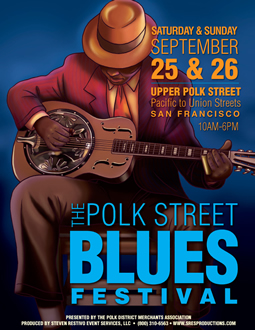 Days like I had on Saturday remind me of the sheer joy of living in this part of the world. There is no other place quite like it for off-the-radar cultural encounters and non-everyday experiences.
Days like I had on Saturday remind me of the sheer joy of living in this part of the world. There is no other place quite like it for off-the-radar cultural encounters and non-everyday experiences.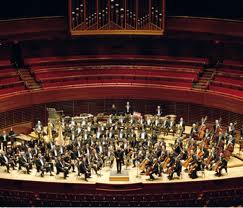 Last night at the
Last night at the 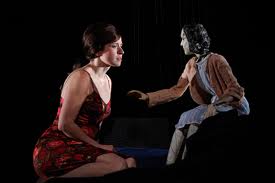 A great playwright is like a puppet master: He or she subtly pulls the strings of character and action to make life seem larger than it is in reality. Ideally, he or she resides in the shadows and the puppet/play itself takes center stage.
A great playwright is like a puppet master: He or she subtly pulls the strings of character and action to make life seem larger than it is in reality. Ideally, he or she resides in the shadows and the puppet/play itself takes center stage. ...Why isn't it ever any good?
...Why isn't it ever any good?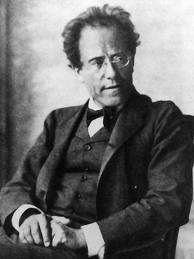 A few days ago, the rules that govern the selecting of repertoire for an orchestral season came up for discussion at a dinner party with a couple of friends, one of whom happens to be the music director of a symphony orchestra.
A few days ago, the rules that govern the selecting of repertoire for an orchestral season came up for discussion at a dinner party with a couple of friends, one of whom happens to be the music director of a symphony orchestra. The culture column of the Bay Area section of the New York Times, which I write every two weeks, had been a bit of a moving target content-wise since I started the gig nearly a year ago. I'm often asked by arts organizations and independent PR people what kind of stories my editors and I are looking for on the culture front. Here are some pointers to help anyone who feels like pitching me:
The culture column of the Bay Area section of the New York Times, which I write every two weeks, had been a bit of a moving target content-wise since I started the gig nearly a year ago. I'm often asked by arts organizations and independent PR people what kind of stories my editors and I are looking for on the culture front. Here are some pointers to help anyone who feels like pitching me: Watched the second installment in what's beginning to look like a fab series of educational films about the works of William Shakespeare.
Watched the second installment in what's beginning to look like a fab series of educational films about the works of William Shakespeare. 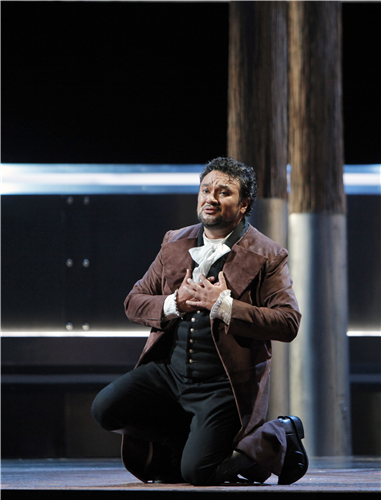 Werther, the central character in Jules Massenet's four act opera of the same title based on The Sorrows of Young Werther by Goethe is an emotional yo-yo. He experiences soaring highs and wallowing lows. If he were alive today, medics would brand him as being bipolar.
Werther, the central character in Jules Massenet's four act opera of the same title based on The Sorrows of Young Werther by Goethe is an emotional yo-yo. He experiences soaring highs and wallowing lows. If he were alive today, medics would brand him as being bipolar.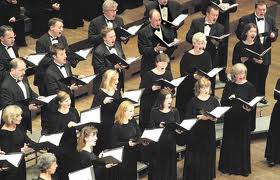 An interesting question came up over tea this morning with Helene Whitson, the creator of the useful and exhaustive
An interesting question came up over tea this morning with Helene Whitson, the creator of the useful and exhaustive 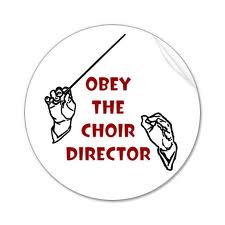 A question I've been asking myself lately is this: Why is it that so many choral conductors treat their singers like children? I'm talking adult ensembles here, not ones composed of minors.
A question I've been asking myself lately is this: Why is it that so many choral conductors treat their singers like children? I'm talking adult ensembles here, not ones composed of minors.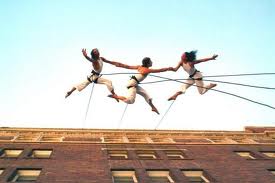 The weekend went by in a blur. Some highlights:
The weekend went by in a blur. Some highlights: This morning I awoke to the
This morning I awoke to the 
 The current sorry state of the arts journalism profession was made very visible last night at the
The current sorry state of the arts journalism profession was made very visible last night at the 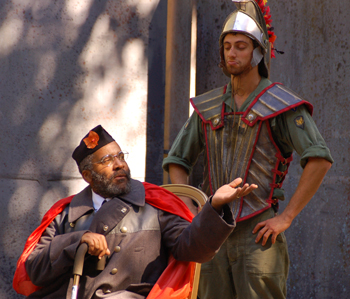
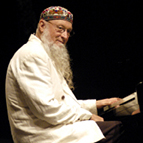 I imagine that there are few other places in the world you can go where, within the space of an hour or two, you can:
I imagine that there are few other places in the world you can go where, within the space of an hour or two, you can: The relationship between public relations professionals and (arts) journalists often feels uneven to me. PR people seem to know much more about -- and are acutely sensitive towards the needs of -- the journalism profession than journalists know are are about PR people, as many PR people have been reporters or editors in the past (journalists rarely come to the profession from a career in marketing). And I think there are a lot of journalists who look down their noses at the PR industry. If a journalist leaves the profession to pursue PR, his or her colleagues will often accuse them of "selling out."
The relationship between public relations professionals and (arts) journalists often feels uneven to me. PR people seem to know much more about -- and are acutely sensitive towards the needs of -- the journalism profession than journalists know are are about PR people, as many PR people have been reporters or editors in the past (journalists rarely come to the profession from a career in marketing). And I think there are a lot of journalists who look down their noses at the PR industry. If a journalist leaves the profession to pursue PR, his or her colleagues will often accuse them of "selling out."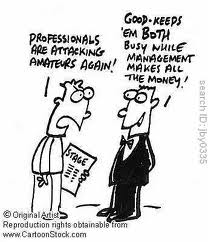 As someone who resides in a country where the terms "professional" and "amateur" have become practically meaningless in the world of the theatre, I was fascinated to read in
As someone who resides in a country where the terms "professional" and "amateur" have become practically meaningless in the world of the theatre, I was fascinated to read in  A friend and I had a discussion this morning about how possible it is for an audience member to detach his or her experience of seeing a staging of a play from the play text itself. We disagreed.
A friend and I had a discussion this morning about how possible it is for an audience member to detach his or her experience of seeing a staging of a play from the play text itself. We disagreed.